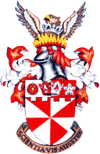The Buildings
home | the buildings | plant house (572) | further pictures...
Combustion Cubicle C5 is the largest of the combustion cubicles. Itís also the emptiest.
All that remains are the metal tracks upon which the test rigs were constructed.
The windows of the viewing room can be seen on the left.
The three General Purpose Combustion Rigs used to be installed here.
"I joined the diesel section of the Naval Mechanical Engineering Division
(NMED) - which like so many things in the MoD got renamed several times,
ending up as the Marine Engines' Branch. I started in 1987, working
mainly on Naval Diesel Engines in the Plant House.
The diesels were
housed in the C cubicles. The engines were often known by their
nicknames - C1 was the Trident (12 cylinder Paxman Valenta or Ventura
emergency generator for Nuclear Subs of the Trident Class), C2 held a
Paxman Ventura that I used for trials on submarine turbocharging. Both
those used the upper control rooms. C3 and C4 were not part of our
domain and I think were empty. C5 was split into several smaller
cubicles - your picture of the C5 cell shows the rails on the floor that
held the engines, but what is missing is that each was in its own
largely soundproofed chamber. The control rooms of the three "mini"
cubicles were down at ground level along the windows. I think the main
open area with the roller doors was C5a, and the three smaller cubicles
were C5b,c and d, though the a,b,c,d might have been the other way. The
one nearest C4 held the SSK (Ship, Submersible, Conventional, which was
the supercharged 16 cylinder Paxman Valenta for the Upholder class type 2400
submarines). I am pretty sure that is the engine in the picture Mike Graddage sent in.
To give an idea of size, Paxman Valentas are the
diesels found in the old InterCity 125 trains. The cylinder had a 7 1/2
inch bore and the 16 cyl supercharged one produced about 1.4 MW of power."
"Next along was the "Smurf" (SRMH or Single Role Mine Hunter engine - a
low magnetic engine) and then the "Dormouse" (A Dorman 6 cylinder). The
engines were operated and looked after by our fitters who were based in
the New Fitting Shop. The North end of the
New Fitting Shop housed machinery, the
South end workbenches for the fitters. The offices were for the PTO in
charge of them and the leading Charge Hand for the workshop, I think."
"The large open end part of C5 was empty when I joined but later housed
the Ruston RK270 - a beast of a 12 cylinder engine. that one was
controlled from the upper control room. The rest of the upper control
room was largely unused - but I did have equipment up there for applying
condition monitoring to engines - including an old IBM PC ATX (with a
colour display!)." - Eddie Kirkman

|
View west across Cubicle C5.
21|04|07 © Simon Cornwell 2007
|
|


